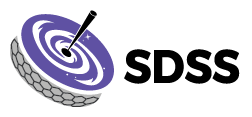
1. Can you describe your role in the SDSS collaboration and what you enjoy most about it?
I am working with LVM data, served as an LVM observer before full robotisation took over and I am managing the LVM social media account on Bluesky. I really love working with the amazing data and the people inside the collaboration. Also, I enjoy sharing the collaboration’s achievements with the public.
2. Can you tell us about your educational background and how you got interested in the field of astronomy/astrophysics?
My educational background feels very basic. I did my Bachelor’s degree in physics in Heidelberg, followed by the Master’s in physics with specialization in Astronomy. After that, I directly applied for the Astronomy IMPRS-HD PhD program in Heidelberg and got a PhD position with Kathryn Kreckel.
My interest in astronomy came very early at the age of 11. I always enjoyed watching astronomy documentaries and got really fascinated by the beauty out there. My parents then gifted me a Newton telescope, and I started hunting for the planets and stars. From that point onward, I always wanted to become an astronomer and did everything in school and university to get closer to my goal. And now here I am, doing my PhD in astronomy as I always wanted and working in one of the biggest collaborations!
3. What projects are you currently working on and what are you most excited about?
I am currently working on calculating the physical properties of star forming regions with the LVM. Specifically, I am analyzing the resolved abundances, electron densities and electron temperatures of single HII regions (e.g. M 20 and 30 Dor) and comparing them with the integrated measurements. Also, I am working on the calculation of the Milky Way’s metallicity gradient, using the observed LVM HII regions.
4. Can you describe how you balance work and personal life, and what advice would you give to someone just starting in the field?
Balancing work and life in academia needs a very strong mind and clear boundaries. Personally, I try to stick to “normal” working hours and have the evenings and weekends off from work. But when working in a world wide collaboration, this can be very hard to do, especially when there are meetings scheduled for late afternoons or evenings. There are just some things that need to be done. Therefore, it is even more important to really take the weekends and vacation days off and do very different things on these days that are not related to work. It also needs to be said that there are also different kinds of supervisors and colleagues. Every individual person has a different perspective and a different kind of working.
Therefore, it is very important to choose a good supervisor and a nice working environment in which you feel comfortable, understood and seen. I would even say that this is more important than the research project itself. Because with a nice supervisor and colleagues, every project is fun 🙂
5. Can you share with us a unique hobby or interest that you have outside of work?
I really enjoy being in nature, working in my garden, and going hiking and climbing. I also love to spend time with my cat, family and friends.
